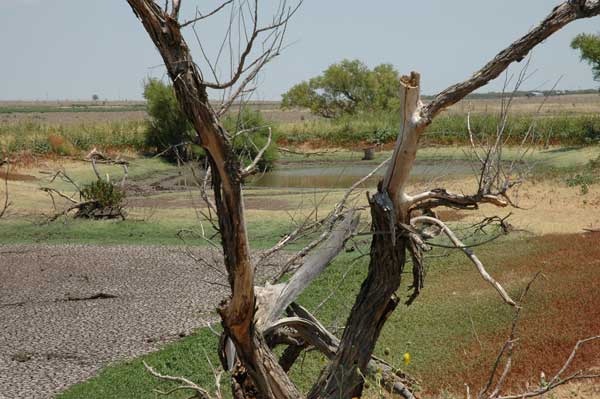
While unexpected rain showers in December were a welcome surprise to many Southwest farmers and ranchers, a National Weather Service climatologist in Fort Worth is warning a dry weather pattern is reestablishing across the region and says the prospect for substantial rain could still be months away and then only if tropical weather filters in from the Gulf.
“While it was nice to see the rain fall in December, we are looking at the increasing likelihood of a very dry winter across the Southern Great Plains, and the indication is we may not see any substantial drought recovery until the summer months when the tropical flow from the Gulf and Atlantic regions return,” says David Brown, regional climate services director at the National Oceanic and Atmospheric Administration in Fort Worth.
The record-breaking drought that has plagued the Southwest has caused disastrous agricultural losses of more than $5.2 billion in Texas alone. In addition to decimated cattle herds in Texas, New Mexico, Oklahoma and other states, the drought has reduced crop acreage and yields significantly across the region and is responsible for depleting surface and below-ground water resources in Northern Mexico as well.
“In spite of the terribly dry conditions across the Southern Plains, Northern Mexico has likely taken a larger hit from the current drought because of a lack of infrastructure. While their drought woes are largely under-reported, large agriculture-producing areas have been decimated there as well,” Brown adds.
Mexican President Felipe Calderon, speaking with Northern State Governors in Mexico City last month, called the drought “the worst the country has ever registered.” An estimated 1.7 million cattle have died of starvation and thirst across five northern states in recent months and Mexican farmers have lost 2.2 million acres of crops to dry conditions.
Severe water shortage
The lack of water is so severe that the Mexican government has been trucking in drinking water to more than 1,500 towns and villages since last summer, serving the needs of an estimated 2.5 million people. In addition, Mexico has purchased corn from the U.S. to distribute to hungry families who normally rely on locally-grown livestock and produce.
Of all planted acreage, crop losses in Mexico’s northern states range between 50 percent up to 85 percent over the last year, including commercial crops like soybeans, corn, wheat and oats.
“In [the State of] Durango, 85 percent of crop acres failed to produce a crop, and what was remaining produced very low-yields, in some cases not even enough to meet the needs of the families working the land,” said Rene Almeida, Durango Agriculture Department's top official.
For those worrying whether the historic lack of rainfall the last two years is the new norm, Brown says the current drought is an “unusual weather phenomena.
“It’s rare to have two years of back-to-back events like this, which can be blamed on the current La Niña. But the good news is that history and climatology are on our side. It would be very rare to see the return of another La Niña in the late fall or early winter later this year, meaning we should experience some drought recovery before the end of the year, and with any luck we may see a more normal rainfall rate in the fall and winter of 2013,” Brown says.
In addition, in spite of an active tropical weather season in 2011, Brown says very few tropical systems affected the U.S. coastline.
“But this probably will not continue. The summer should bring us a new round of tropical weather and I think we may see a greater impact on U.S. soil, meaning we may finally get some beneficial rain this summer.”
While no one wants to see the landfall of a major hurricane on the Mexican or U.S. coastline, most agree they would welcome a series of smaller, rain-producing systems during the tropical season.
About the Author(s)
You May Also Like






